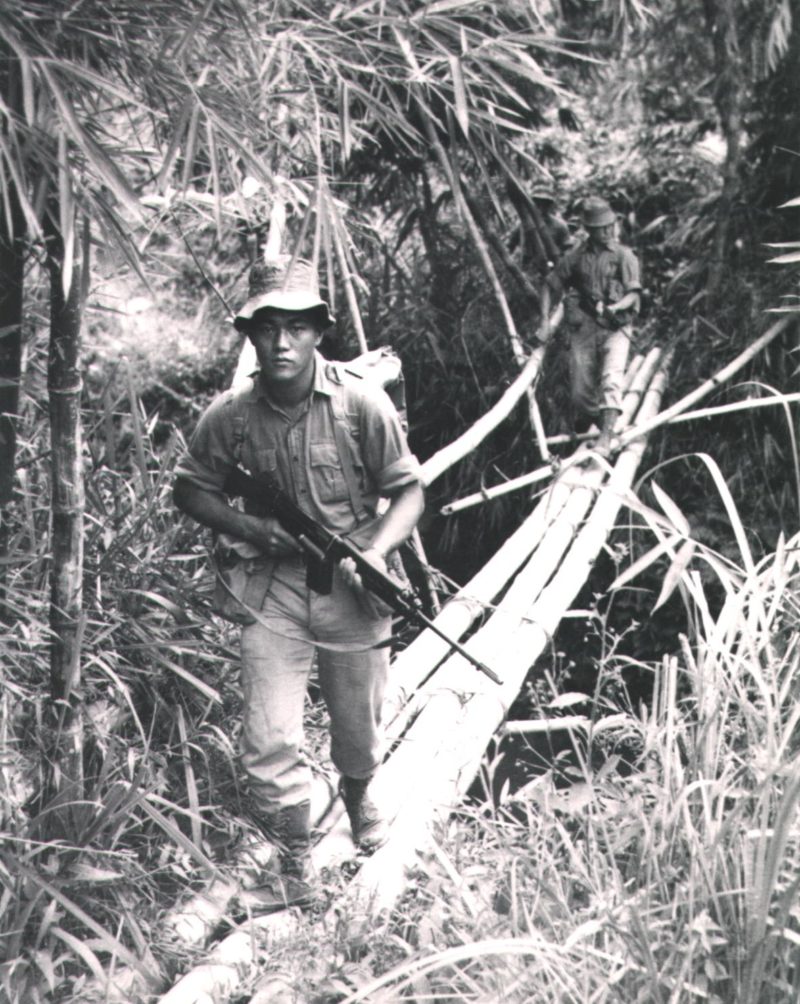The Brunei Revolt and The Borneo Confrontation

The Brunei Revolt and The Borneo Confrontation
In 1962 the island of Borneo comprised four different states: Kalimantan, North Borneo, Sarawak and Brunei. The latter three were British supported territories. In the aftermath of the Malayan Emergency, declared over in 1960, Britain and Malaya hoped to incorporate North Borneo, Sarawak and Brunei into a Greater Malaysia (the Federation of Malaysia) giving them a greater degree of independence whilst still keeping them within the British Commonwealth. The Indonesian President, Sukarno, who had covertly supported communist terrorists during the Malayan Emergency, opposed this move as he wanted to bring the three states into the territory of Kalimantan and therefore extend Indonesian control across the whole of Borneo. . With the ending of the Malayan Emergency, Sukarno aimed to continue to destabilise the federation process by using the Indonesian military and by training and supporting the Bruneian far-left group, The North Kalimantan National Army (TNKU), in an effort to overthrow the Sultan of Brunei and bring that state under Indonesian influence.
On 8th December 1962, pro-Sukarno rebels from the TNKU attempted to capture the Sultan of Brunei who in turn called the British for help. Police stations, power stations, the house of the Brunei Prime Minister and the Sultan’s properties were attacked. After the British Far East Command received the Sultan’s message, two companies of Gurkhas from the 1st Battalion 2nd Gurkha Rifles (1/2GR) were immediately placed on notice to be airlifted in from Singapore, 900 miles away. Nine hours later the Gurkhas were flown into Labaun airfield. The companies landed at around 10pm that night and advanced against the rebel forces, taking only minor casualties. A group of Gurkhas led by Captain Digby Willoughby managed to secure the Sultan and by December 9th the rest of 1/2GR had arrived.
Over the course of the next ten days other units joined them (including thousands of local Dayak levies), in what became known as Operation ALE. Over 3,400 rebels were captured, and the rebellion was easily suppressed. However, the mopping up of rebel forces who had escaped into the jungle continued until 1963. Indonesia announced a policy of confrontation with Malaya and, as well as direct attacks on the Malayan peninsula from Sumatra, fomented unrest along the border between Kalamantan and its northern neighbours North Borneo, Sarawak and Brunei – , beginning what became known as the Borneo Confrontation. For four years Gurkhas continued to fight against units of the Kalimantan Army in Sabah (North Borneo) and Sarawak with all eight battalions of British Gurkhas taking part. As in the Malayan Emergency, Gurkha units proved their value as jungle fighters. It was during the confrontation, in 1965, that Lance-Corporal Rambahadur Limbu of the 10th Princess Mary’s Own Gurkha Rifles was awarded the VC for attempting to rescue two wounded comrades under heavy and accurate enemy fire.

